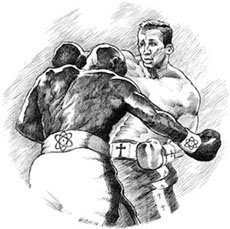On April 19 at 7:30 p.m., Eric Mortensen, assistant professor of religious studies, and Elwood Parker, professor of mathematics, led a discussion on the gap between religion and science. Senior James Croonenberghs organized the event. Over 60 people packed into Boren lounge in a half-circle around the speakers. Late arrivers sat on tables and leaned against walls. When participants had to leave early, outsiders flocked to join the inner circle.
These people came to witness an intellectual clash over theology and objectivity. What they received was far more nuanced.
“As we proceed with this discussion, let’s all seriously consider the possibility that we might be wrong,” Croonenberghs said.
He opened the panel with a theme of intellectual curiosity, not dogmatic pride. His wishes permeated the dialogue.
To understand the complexity between religion and science, consider this four-line verse of logical Buddhism from the first-century Buddhist philosopher Nagarjuna.
“If fire depends on fuel,
And fuel depends on fire,
On what are fire and fuel established as dependent?
Which one is established first?”
Nagarjuna explains the emptiness of human independent self-concept through the metaphor of the fire. By showing that neither fuel nor fire can exist without the other, he challenges the idea that they are independent of each other.
Like fire and fuel, humans also do not exist independently, and the concept of a solitary self is flawed.
As Mortensen said, Nagarjuna uses strict logical thinking to justify his religious claims.
And the philosophical bleed extends in both directions. Math has religious traits.
Math is founded on axioms, or assumed truths in mathematics. The fact that one plus one will always equal two is an axiom.
“We saw it work that way the number of times we tried it, so we believe it works that way every time” Parker said. “That’s a leap of faith.”
Math is faith. Religion is logic.
If a mathematician and a Buddhist agree, the audience is going to need help to rectify the two.
“Could there be one universal law?” asked an audience member. “Would that be like God?”
Parker called this GUT, for Grand Unified Theory.
“But every model that we have is, to some extent, an oversimplification,” Parker said. “Every time mathematicians and scientists answer a question, we ask about ten more.”
So the idea of claiming a GUT is contradictory to science because good scientists never settle on a known truth, let alone a universal truth. That’s why scientists have theories, not facts.
“Truth-claims that we have are just necessarily not the truths of other people,” Mortensen said. “When we talk about reality, we have to think about whose reality we are talking about.”
The point resonated with Parker on science. True science does not presume that laws are facts, only that they are consistent with current knowledge.
“The last ten years of science have seen some fantastic bridges being built towards paradigms that you might call Buddhist,” Mortensen said. “Quantum physics and Buddhism are really talking about the same thing.”
Religion and science do not lock antlers in a macho struggle for supremacy. In quantum physics, they coexist.
Both ponder the interconnectedness of infinitely minute patterns. Both argue that the world we perceive is an illusion compared to the world of these interdependent relationships.
Science accepts that any rule, no matter how time-tested, could be empty of value. Buddhism dictates that, on an enlightened level, all views are empty.
Through this discussion, Parker and Mortensen proved that religion and science do not have to be diametrically opposed. They may be two different ways of looking at reality, but they are not exclusive and the walls may be coming down.
Elwood Parker: “As we have gathered more scientific evidence, we have been able to answer questions that were previously answered by religious doctrine. I suggest to you that that’s a false dichotomy.”
Eric Mortensen: “If you travel from Europe to Asia, there’s no wall. It’s a very smooth transition.

